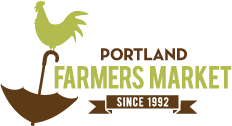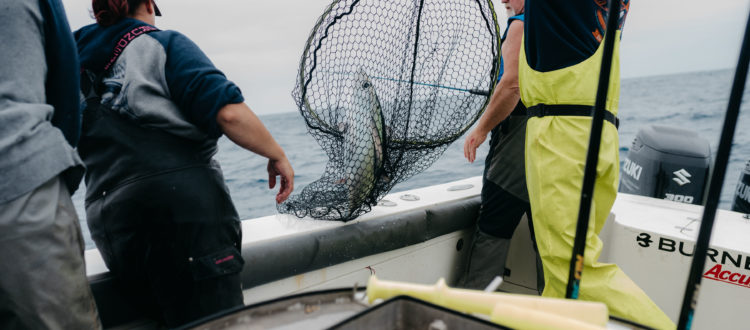Tre-Fin Seafood: The Day Boat Difference
Photos by Kate Ames
When most people think of a farmers market, the first image in their mind is probably a beautiful display of seasonal vegetables, or maybe bright, delicious berries in flats. Some might see locally raised meat. But especially here in the Northwest, local seafood also has an important place in the market. We’re excited to welcome a new seafood vendor this year, Tre-Fin Day Boat Seafood, based in Ilwaco, WA. We talked to Tre-Fin’s CEO and co-founder, Mike Domeyer, about some of the interesting ways they’re finding to innovate in the small-scale seafood business, and the challenges of staying small in an increasingly corporate world.
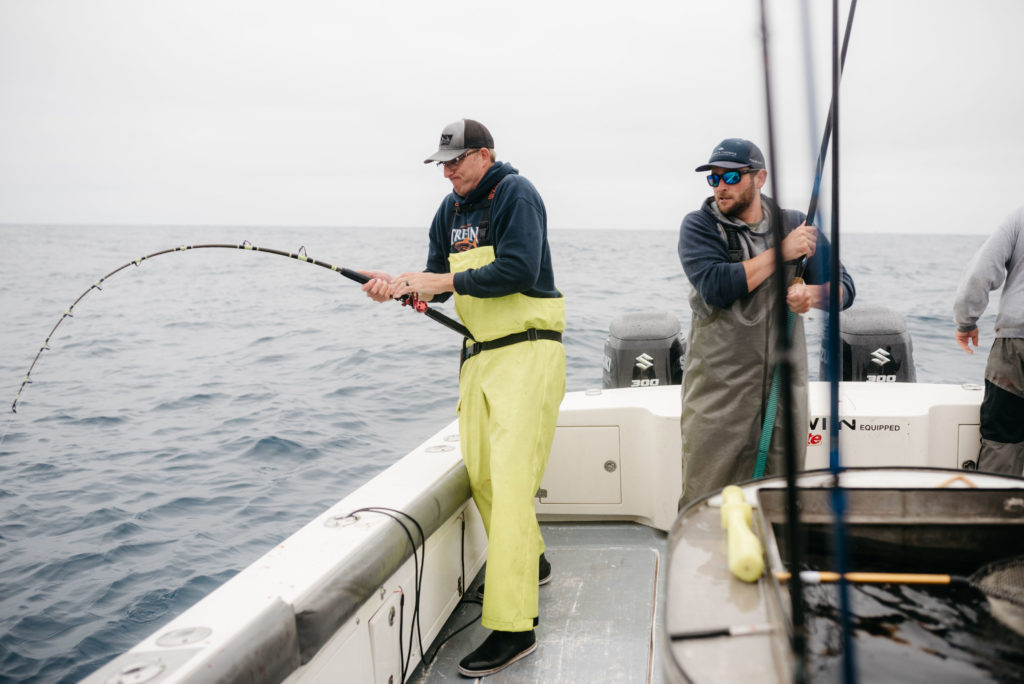
What is Day Boat Fishing?
“We have developed this concept of Day Boat Fishing,” Mike explains. “It required us to bring fish back the same day it was caught. We believe it’s a way to keep our seafood regional and serve the local communities instead of entering a commodities market. This process plugs the fishers in to becoming better stewards of the resources, and ends up paying them more. We think that it’s a shorter food chain and a better way to manage our seafood resources.”
Some of that should sound very familiar to a farmers market shopper. So many of the issues that affect small farmers – the consolidation of small farms into big factory operations, the argument of value vs. commodity prices, and the struggle for better environmental stewardship – are echoed in the small-boat fishing world.
Tre-Fin’s model is focused on not only the quality of the fish, but the sustainability of the resource.
“A lot of times, the general public don’t realize how harmful large-scale fishing techniques can be. Some of these methods are so damaging, not only to the habitat, but to the livelihood of local fishing communities too. We 100% want to celebrate where it’s coming from.”
In order to make that work as a business, they’ve had to be innovative and inventive, from their boat’s actual equipment to their business models. About 60% of Tre-Fin’s fish still comes from their own boat, but they also run a co-op of eight other boats to supply the remaining product. They also have a very interesting model called a CSF (Community Supported Fishery), like a CSA for fish, where members get a portion of their harvest for the year, for a set price.
“It’s a very important part of our model. We guarantee a price for the fish throughout the season, so a boat crew can plan, and instead of being beholden to a commodities market that can go up and down.”
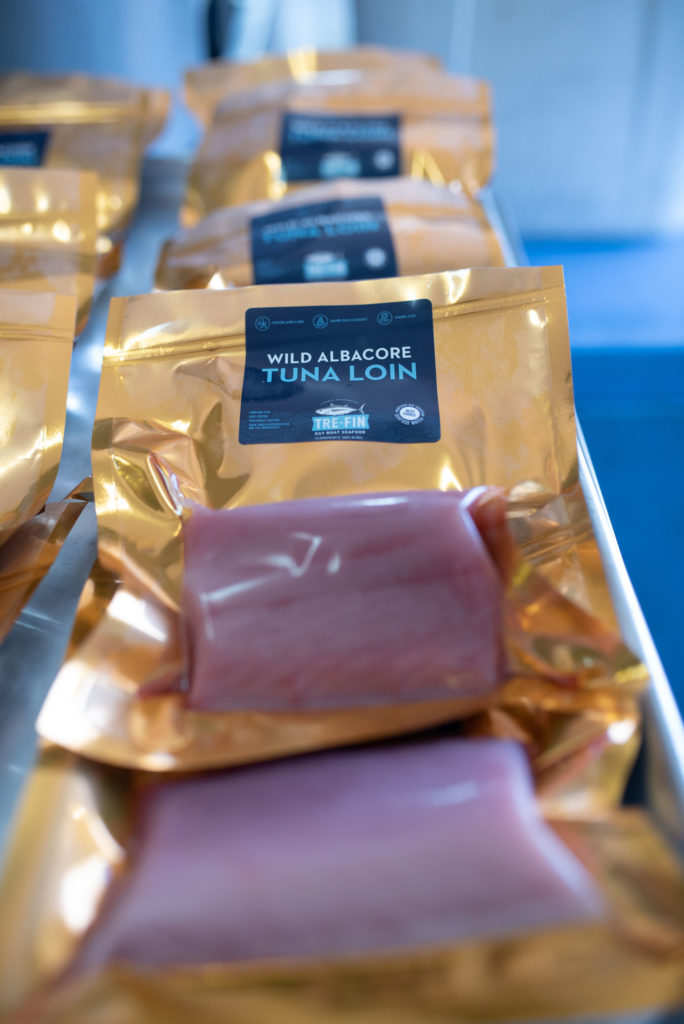
It All Started with Tuna
“Tre-Fin started off as a small fishing operation concentrating on albacore, and we attempted to find a way to supply higher-quality albacore the same way that we sport-fished for them. Our proof in concept was to start with a fishery that we were good at.”
But it’s grown to much more than just tuna. Tre-Fin’s market booth features a diverse array of fish species, including rockfish, sablefish, lingcod, and more.
“We had to immerse ourselves in the other fisheries. We truly believe, and we’re stubborn about it, that the only way we can do this is by knowing ourselves how that fish is coming out of the water, how it’s handled once it’s on deck, to yield the quality that we’re looking for..”
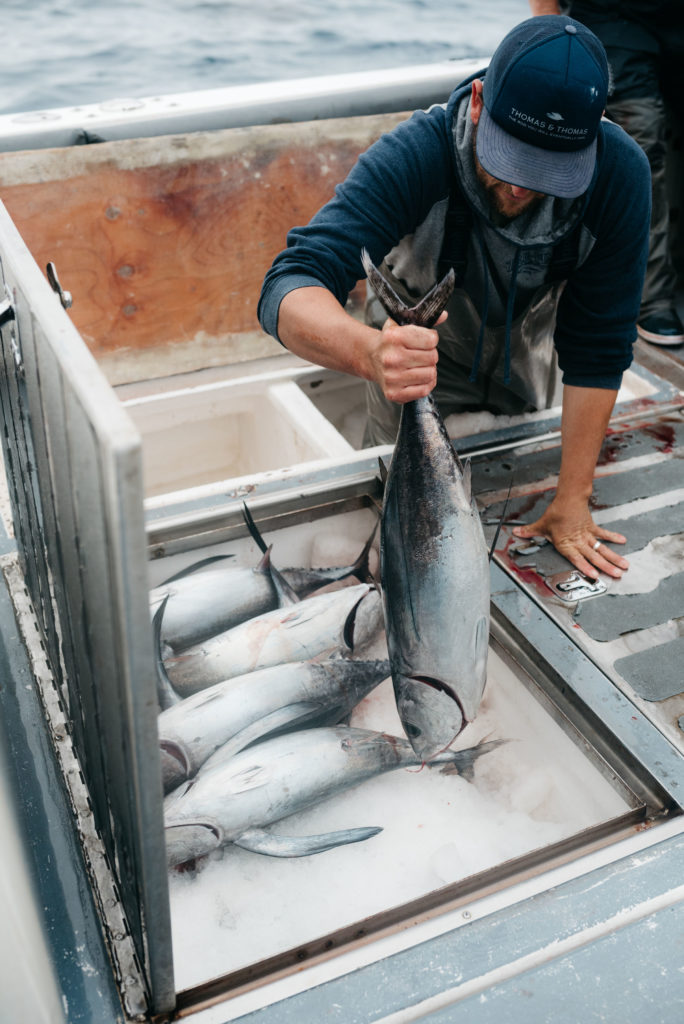
In Seafood, Frozen Isn’t the Opposite of Fresh
One interesting difference between the seafood business and something like farmed produce is the concept of freshness. We often think of a choice between fresh and frozen, but unless you’re buying straight off of the dock, fish frozen the right way can be the freshest possible choice:
“A lot of times, a typical fish market would bring in fresh fish and try to sell that fresh fish for 4-5 days, and then whatever amount didn’t sell fresh would then be processed and frozen. What we do is take the fish within 24 hours of being caught, hand-cut it, package it and then flash-freeze it, not after a window of trying to sell it fresh, but immediately. To us, that frozen product is better than a piece that has never been frozen.”
The proof is in the taste, and as a customer myself, I can tell you, the difference between this fish and an average grocery store filet is every bit as noticeable as with farmers market tomatoes or broccoli. The quality is just night and day better. Come see for yourself, by visiting Tre-Fin’s booth at Shemanski Park Farmers Market on Wednesdays at SW Park and Main downtown.
